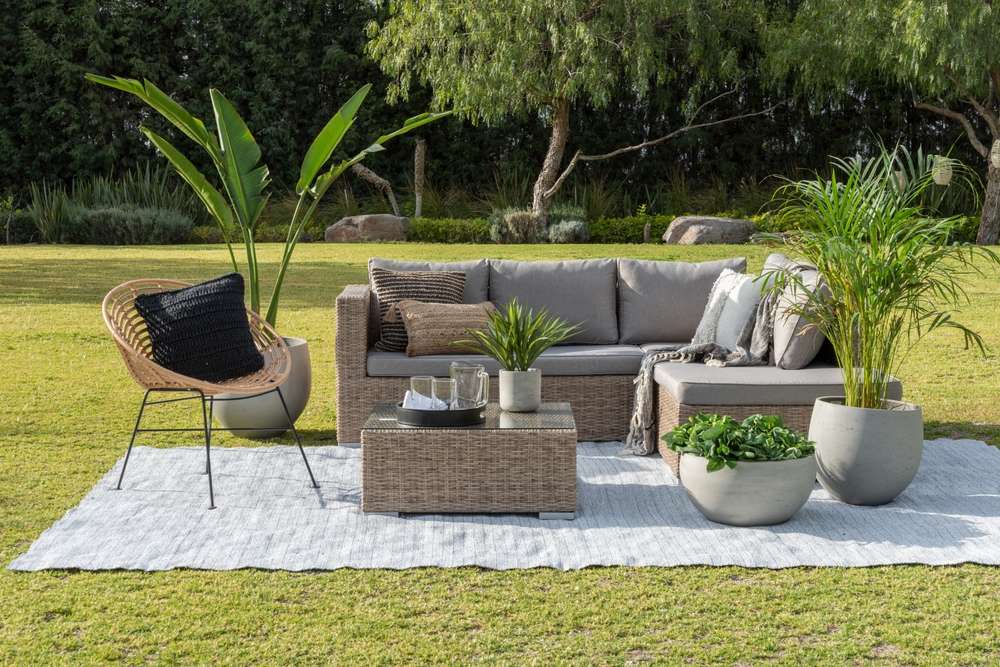Create Your Perfect Outdoor Living: Furniture Guide
Extend your home's living space outdoors with the right furniture choices. Whether you have a garden, patio, or tiny balcony, this guide covers essential furniture types, material options, layout tips, upkeep advice, and current design trends to help you build a comfortable, stylish outdoor oasis. Learn how to pick durable materials, arrange functional zones, and maintain pieces for long-lasting enjoyment.

Creating a welcoming outdoor living area turns any exterior into an extension of your home. With thoughtful selections of seating, accents, shade, and materials, you can build a space that’s both stylish and practical. This guide walks through furniture types, material choices, design considerations, care tips, and trends to help you craft an outdoor retreat tailored to your needs.
Key types of outdoor furniture
A balanced outdoor setup includes seating, surfaces, and shade. Consider these common categories when planning your space:
- Seating for lounging
- Chaise lounges: Ideal for sunbathing or reading, chaise lounges add a resort-like feel to patios and pool decks.
- Daybeds: Larger and more cushioned, daybeds provide a comfortable spot for napping or shared lounging.
- Hammocks: Perfect for relaxed, casual zones, hammocks are space-efficient and add a playful vibe.
- Dining and conversation pieces
- Dining sets: Tables and chairs designed for al fresco meals, ranging from compact bistro sets to large family tables.
- Sofas and sectionals: Modular outdoor sofas create conversation areas and can be configured to suit different layouts.
- Accent and utility items
- Side tables and ottomans: Small surfaces and footrests increase functionality and comfort.
- Storage benches and boxes: Useful for stashing cushions, toys, and garden accessories to keep the area tidy.
- Shade structures
- Umbrellas: Flexible, affordable protection from sun and light rain; available in many sizes and tilting designs.
- Pergolas and gazebos: More permanent structures that define the space and can support climbing plants or curtains for privacy.
Mix and match pieces to create zones for dining, lounging, and relaxing that reflect how you actually use the space.
Choosing the right materials
Material selection determines durability, maintenance level, and appearance. Match choices to your climate, budget, and aesthetic goals:
- Wood: Teak, cedar, and acacia remain popular thanks to their warm looks and natural resilience. They benefit from periodic sealing or oiling to preserve color and prevent cracking.
- Metal: Aluminum is lightweight and rust-resistant, while wrought iron and steel are stronger but may need protective finishes to avoid corrosion.
- Wicker and rattan: Synthetic resin wicker offers the classic woven look with far better weather resistance than natural fibers.
- Plastic and resin: Affordable, easy-care options that resist moisture and are great for casual setups or small balconies.
- Fabrics: Look for outdoor-rated, UV- and mildew-resistant textiles for cushions and covers to maintain comfort and color fastness.
Consider local weather: choose rust-resistant metals for humid climates, rot-resistant woods or synthetics for rainy areas, and UV-stable materials where sun exposure is intense.
Designing the outdoor space
A functional, attractive outdoor area requires planning beyond picking pretty furniture. Keep these factors in mind:
- Layout and flow: Plan pathways and avoid blocking entrances. Create distinct areas for dining, lounging, and activities.
- Scale: Furnish to the size of your space—oversized pieces overwhelm small patios, while tiny items can look lost in a large yard.
- Comfort: Invest in quality cushions, supportive seating, and throw pillows to increase usability.
- Lighting: Combine task lighting, ambient fixtures, and accent lights to extend usability after dark and enhance mood.
- Storage: Built-in or freestanding storage keeps cushions and accessories safe from weather and pests.
- Versatility: Choose modular or multifunctional furniture—folding tables, convertible benches, and stackable chairs—for adaptability.
- Color and cohesion: Select a palette that complements your home exterior and landscaping to create a unified look.
Care and maintenance tips
Routine upkeep will prolong the life and appearance of outdoor furnishings:
- Clean regularly: Brush off debris and wash surfaces with mild soap and water as needed.
- Protect from extremes: Use covers or move items indoors during storms and winter months when possible.
- Treat wood: Apply sealants or oils to wooden pieces to slow weathering and fading.
- Check hardware: Tighten screws and address rust or wear promptly to prevent larger issues.
- Store textiles: Bring cushions inside when not in use to avoid mildew and sun damage.
- Rotate placement: Move items occasionally to prevent uneven sun exposure and wear patterns.
Current trends to consider
Design trends can guide fresh choices but should complement your personal preferences:
- Indoor-outdoor continuity: Pieces that look at home inside or out help create seamless transitions between spaces.
- Sustainable materials: Recycled plastics, reclaimed woods, and responsibly sourced materials are increasingly popular.
- Multifunctional designs: Storage-integrated benches, convertible tables, and modular seating maximize usability.
- Bold palettes and patterns: Brighter fabrics and patterned cushions add personality beyond neutral tones.
- Smart features: Integrated speakers, solar lighting, and charging stations bring convenience to exterior living.
- Minimalist lines: Clean shapes and unobtrusive silhouettes suit modern landscapes.
Final thoughts
Thoughtful furniture selection and planning let you turn any outdoor area into a usable, inviting extension of your home. Balance comfort, durability, and style by choosing pieces that fit your space and lifestyle, invest in weather-appropriate materials, and keep up with simple maintenance. Whether you’re outfitting a tiny balcony or a sprawling garden, the right combination of seating, shade, and accents will create an outdoor haven you’ll use and enjoy for years.






